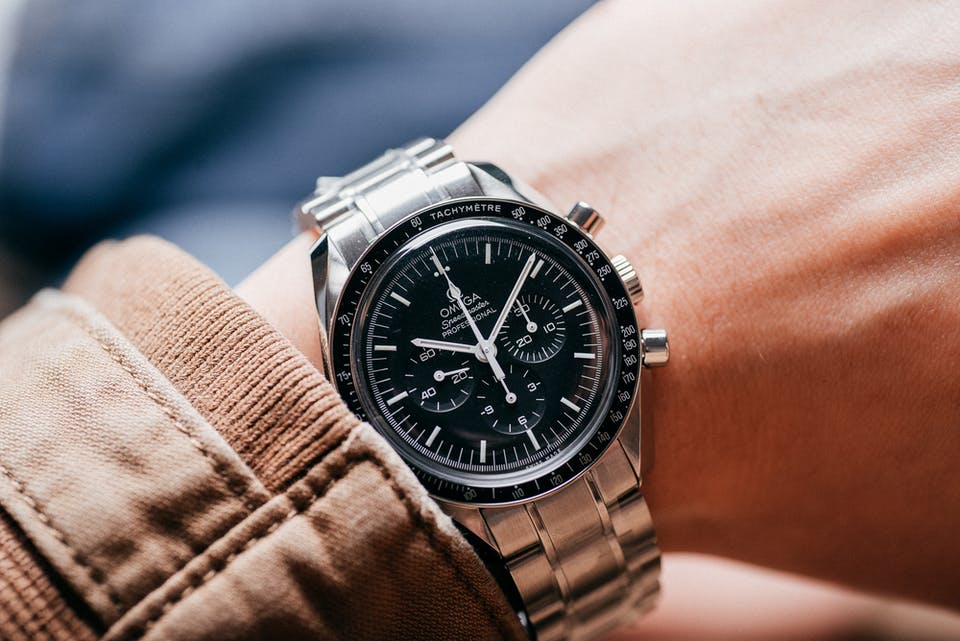"The famous Calibre 321 is back in production" - With a simple sentence, Omega caused a lot of commotion recently. The Caliber 321 is considered the most popular vintage chronograph calibre among watch lovers and was the first movement to land on the moon. Read on to find out everything that has been revealed so far.

Omega Caliber 321: The Legendary Movement returns!

Calibre 321: A Legend in the Watch World
Omega's Instagram post spread like wildfire on social media last Wednesday and is currently still one of the top themes in the watch world: The Calibre 321 is now in production for the first time since 1968! In fact, fans have frequently expressed their hopes for the reincarnation of the historic movement and now their wishes have finally come true.
The Caliber 321 is not only one of the identifying features of the Moonwatch, which was utilised in the first 1957 Speedmaster, but the Caliber 321 was one of the main reasons why the Omega Speedmaster was the only wristwatch that met NASA's demanding requirements for a space expedition in 1962.

The Caliber 321 was developed as early as 1942 in collaboration between Omega and Lemania. It is still considered one of the best column-wheel chronograph calibres today. Not surprisingly, luxury manufacturers like Vacheron Constantin, Breguet and Patek Philippe have used the Calibre 321 as the basis for their own chronograph movements.
Buy Now: Omega Watches with Calibre 321Calibre 321 vs. 861/1861
It was not until the introduction of the Speedmaster 145.022 in 1968 that the Caliber 321 was replaced by the more cost-effective and precise Caliber 861 – a Lemania production. Calibres 861 and 1861 are still in use today in current Moonwatch models.
The constructive similarity of the calibres 321 and 861/1861 cannot be denied. Both movements are considered to be extremely robust and reliable and have proven themselves in space. The central difference lies in the way the chronograph complication works: While the calibre 321 has a column-wheel chronograph, the calibre 861/1861 has a cam/shuttle system for the chronograph operation. The calibre 321 requires more maintenance and is more expensive to produce, partly because of the column wheel.

Details of the New Edition
Omega has already announced that the historical Caliber 321 will be analysed by tomography in order to produce an exact reconstruction. The movement analysed is the Caliber 321 from the Speedmaster Ref. 105.003 owned by Eugene Cernan, a NASA astronaut who was part of the Gemini 9, Apollo 10 and 17 crew.
Omega is committed to authenticity and since the new edition will be an identical reproduction, it is certain that the movement will not receive METAS certification. The only difference to the historic Caliber 321 is that the formerly copper-coloured components of the movement will now be given a PVD coating in Sedna gold to prevent fading as a result of ageing. Production is to take place entirely in-house in Bienne. In addition, each calibre will be assembled with the respective watch by a single watchmaker.

Following previous assumptions, Omega will not produce the Caliber 321 in a limited edition but quantities will remain quite low due to high production efforts. We can also forecast that the new calibre will most likely not be used in a 50-year Apollo 11 special series - due to be launched later on this year. It is predicted that the Caliber 321 will be launched in a special chronograph with a gold case.
Final thoughts
Omega's announcement is without a doubt a milestone in the company's history and an unforgettable event for watch enthusiasts. Omega is not only able to build contemporary watches that are technically sophisticated and exciting (Co-Axial escapement, METAS certification, etc.) but are also continuously able to keep vintage watch lovers on their toes.
It remains to be seen whether we will learn more from the official side until July - the 50th anniversary of the Apollo 11 mission - or perhaps even earlier. We will keep you posted!
Buy Now: Watches from Omega